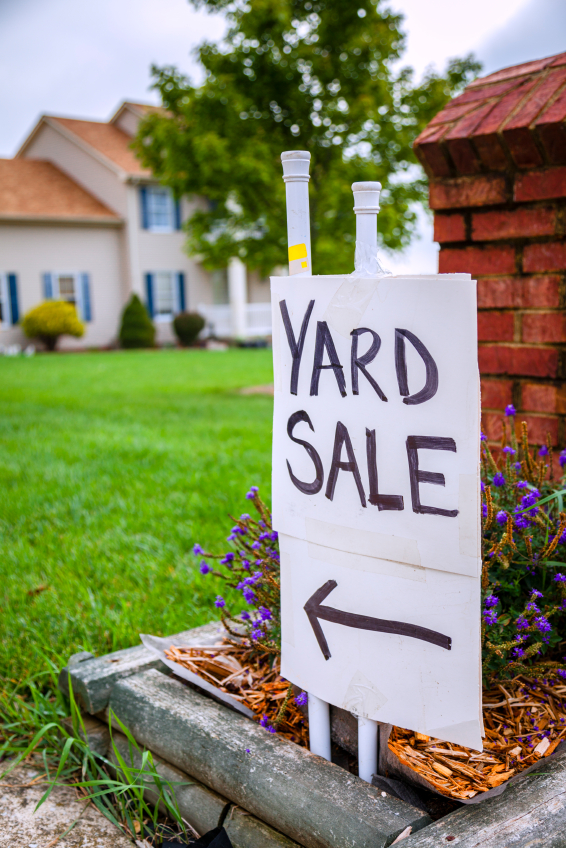
As warmer weather arrives and our communities get greener, why not green up everything else, too? You’re probably already green, but you can become even greener this spring, and save some green! It’s easy being green!
Overuse of the word green, and overdone clichés? Guilty to both. But all true? Yes indeed!
Follow these 10 tips for families:
1. Go used new.
 One of the best ways families can save money is to buy used clothes, furniture, sports equipment and more. That’s old hat, but this year start buying used in a new way. For example, you could add a new thrift store to your shopping circuit. Or you could focus on things you haven’t bought used before, such as used sports stuff for the kids. From balls to gloves to specialized practice equipment, you can find good selections at thrift stores, garage sales or online on Craigslist. Also check out SwopBoard, a local online marketplace that donates part of each sale to local schools.
One of the best ways families can save money is to buy used clothes, furniture, sports equipment and more. That’s old hat, but this year start buying used in a new way. For example, you could add a new thrift store to your shopping circuit. Or you could focus on things you haven’t bought used before, such as used sports stuff for the kids. From balls to gloves to specialized practice equipment, you can find good selections at thrift stores, garage sales or online on Craigslist. Also check out SwopBoard, a local online marketplace that donates part of each sale to local schools.
2. Eat super-local and cheap.
 Growing your own vegetables, herbs and fruit can be great fun and exercise, and will improve your family’s diet immensely. But it’s easy to spend lots of money on gardening, and you end up not saving much on food bills. If saving money is one of your goals with the garden, concentrate on crops that are easy to grow where you live and will get used. For example, if your family eats a lot of salads, grow lettuce, even in containers. Arugula is super-easy to grow from seeds. For veggies and fruit you can’t grow at home, hit the farmers markets. Often you can get good deals, especially on larger quantities, near closing time when vendors are trying to clear out their stock for the day.
Growing your own vegetables, herbs and fruit can be great fun and exercise, and will improve your family’s diet immensely. But it’s easy to spend lots of money on gardening, and you end up not saving much on food bills. If saving money is one of your goals with the garden, concentrate on crops that are easy to grow where you live and will get used. For example, if your family eats a lot of salads, grow lettuce, even in containers. Arugula is super-easy to grow from seeds. For veggies and fruit you can’t grow at home, hit the farmers markets. Often you can get good deals, especially on larger quantities, near closing time when vendors are trying to clear out their stock for the day.
3. Downshift your driving for real.
Driving all over the place is the least-green thing most families do. We often talk about driving less, but we rarely actually do it. Work together as a family to cut down on car trips, setting specific weekly goals if you can. So how will you go places? Get creative, with combined bike and bus trips for instance. Walk more. Use your technology, including cell phones, texting and social media, to make car-pooling work to school or sports practices.

4. Go new, big and white.
Decide which of your major appliances is most energy-inefficient, whether it’s the refrigerator or washing machine or something else, and replace it this year. You can even get a device such as the Kill A Watt meter to help you calculate your efficiency and savings. With a new front-loading washer you can save on water bills, too.
5. Lead the way with LEDs.
This spring, put new LED (light emitting diode) bulbs in five lights you use frequently. You’ll save money in the long run, especially if you buy LEDs using in-store discounts provided by local area electric utilities Seattle City Light and Puget Sound Energy.
 6. Let it go.
6. Let it go.
Sell some of that stuff sitting in your garage or basement unused for years, from furniture to old record albums to exercise equipment. Pick the easiest way to sell it, whether it’s Craigslist or a consignment shop or a neighborhood garage sale. What you can’t sell, give away.
7. Turn it down, turn them off.
As with reducing driving, your family needs goals and a concrete plan to keep the heat turned down and lights turned off when they aren’t needed. Get ideas from the kids. Use taped-up notes or reminder texts. Provide rewards.
8. Downsize sooner.
Many folks move to a smaller home after all the children have moved out. But if you do that sooner rather than later, you can save serious money and reduce your environmental impact. If you’re now a three-person household instead of a five-person household, for example, the time might be right. Conversely, you could take in another person, such as an exchange student or relative, to make your housing more efficient.
9. Buy refurbished electronics.
Used electronics have a bad rap. But refurbished electronics from reputable stores or online retailers are a different green story. As Melanie Pinola puts it on Lifehacker, “In many cases refurbished electronics are a great steal – ‘good as new’ computers, TVs, stereos, mobile devices, etc. that cost much less and last at least as long as their brand-new counterparts.” You can get refurb’d electronics with warranties and other protections, so give them a try, or suggest that your kids buy a less expensive iPod or other music player that way.
10. Cut screens and wires.
 Lastly, to somewhat contradict the previous one, reduce the number of electronic devices in your home. It can bring your family closer, and even if that’s a lost cause, you can cut waste and possibly save money by giving away or selling the electronics that aren’t being used much. And how about ditching cable TV? You don’t really need it anymore for the really basic and important viewing, like YouTube videos and the Seahawks. Maybe the big savings from getting rid of cable isn’t exactly “green,” but it can help save your health and your sanity.
Lastly, to somewhat contradict the previous one, reduce the number of electronic devices in your home. It can bring your family closer, and even if that’s a lost cause, you can cut waste and possibly save money by giving away or selling the electronics that aren’t being used much. And how about ditching cable TV? You don’t really need it anymore for the really basic and important viewing, like YouTube videos and the Seahawks. Maybe the big savings from getting rid of cable isn’t exactly “green,” but it can help save your health and your sanity.
For more tips and resources, visit www.KCecoconsumer.com.
Tom Watson manages the EcoConsumer public outreach program for King County Recycling and Environmental Services. You can contact him with questions or comments at tom.watson@kingcounty.gov or 206-477-4481.












